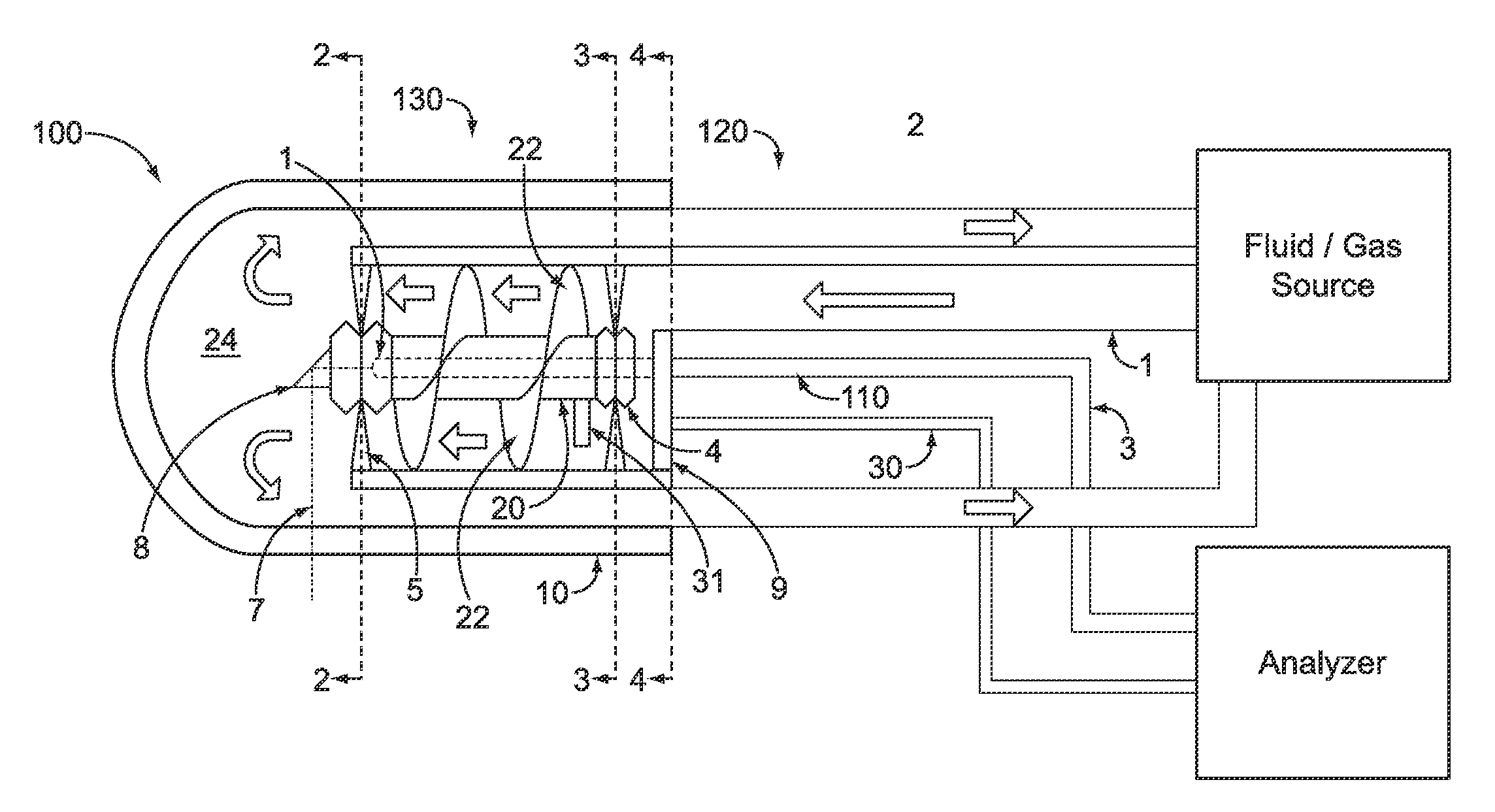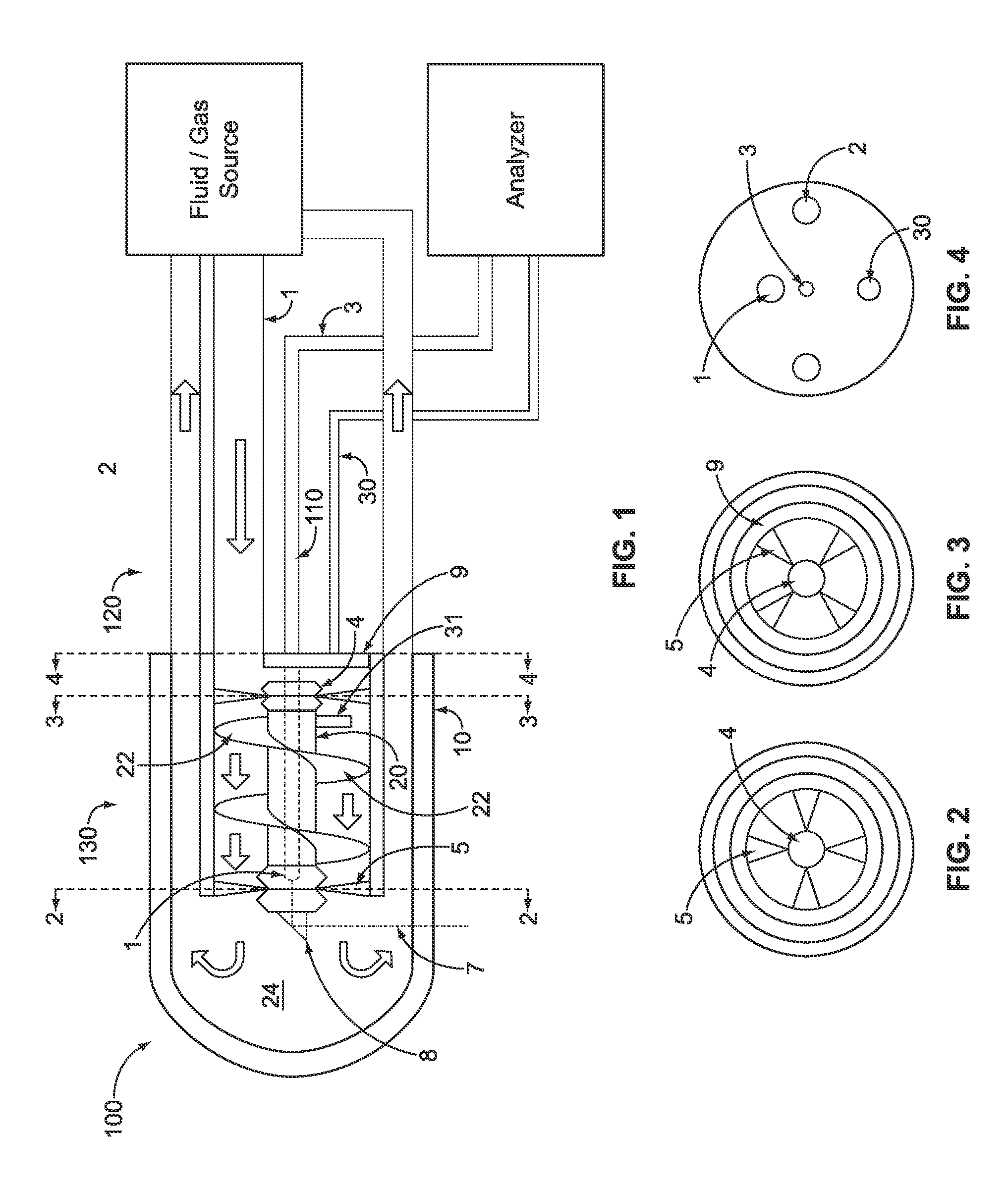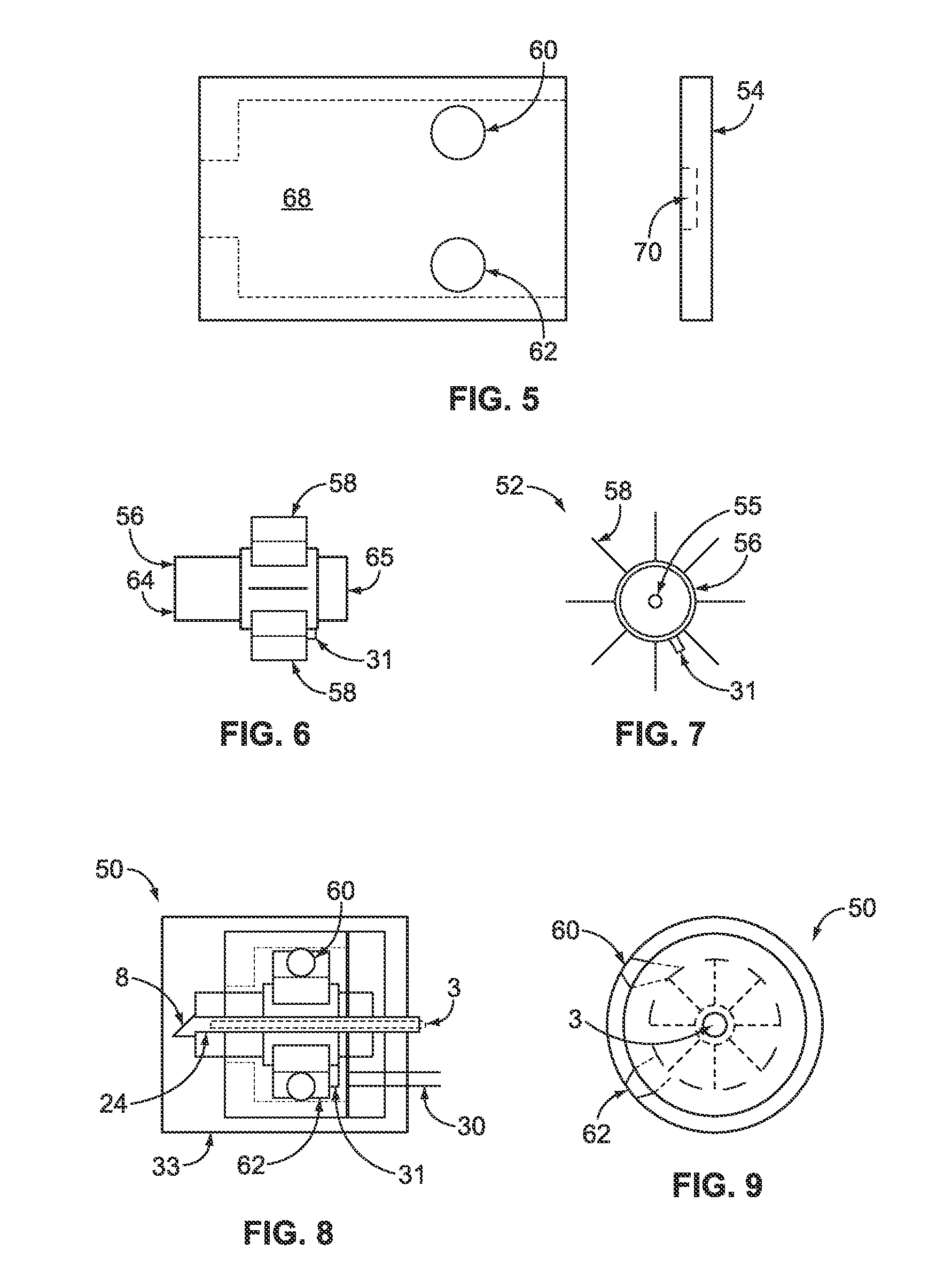Catheter imaging probe and method
a catheter imaging and optical coherence tomography technology, applied in catheters, applications, therapy, etc., can solve the problems of myocardial infarction, prone to rupture, no methods are currently available to the cardiologist,
- Summary
- Abstract
- Description
- Claims
- Application Information
AI Technical Summary
Benefits of technology
Problems solved by technology
Method used
Image
Examples
Embodiment Construction
[0032]Referring now to the drawings wherein like reference numerals refer to similar or identical parts throughout the several views, and more specifically to FIG. 1 thereof, there is shown a catheter imaging probe 100 for a patient. The probe 100 comprises a conduit 110 through which energy is transmitted. The probe 100 comprises a first portion 120 through which the conduit 110 extends. The probe 100 comprises a second portion 130 which rotates relative to the conduit 110 to redirect the energy from the conduit 110.
[0033]Preferably, the first portion 120 includes an inlet tube 1 through which fluid flows and wherein the second portion 130 is turned by flowing fluid from the inlet tube 1. The second portion 130 preferably includes a turbine 4 which is turned by the flowing fluid. Preferably, the turbine 4 includes a rotating center shaft 20 through which the conduit 110 extends, and spiral shaped inner grooves 22 which extend from the center shaft 20 that provide a rotating torque ...
PUM
 Login to View More
Login to View More Abstract
Description
Claims
Application Information
 Login to View More
Login to View More - R&D
- Intellectual Property
- Life Sciences
- Materials
- Tech Scout
- Unparalleled Data Quality
- Higher Quality Content
- 60% Fewer Hallucinations
Browse by: Latest US Patents, China's latest patents, Technical Efficacy Thesaurus, Application Domain, Technology Topic, Popular Technical Reports.
© 2025 PatSnap. All rights reserved.Legal|Privacy policy|Modern Slavery Act Transparency Statement|Sitemap|About US| Contact US: help@patsnap.com



